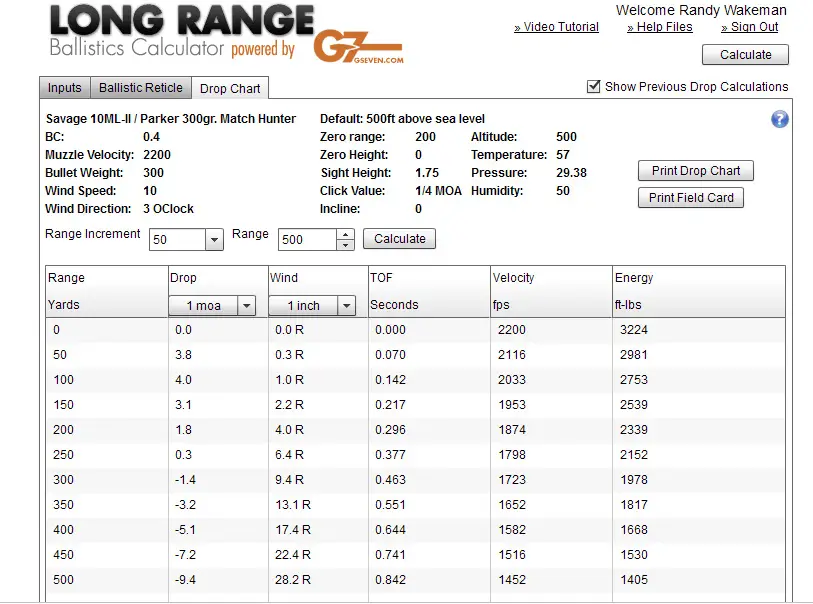


Time to Find a New Propellant for Your Savage 10ML-II?
Over the years, all of the game ending up on the wall and in the freezer have been from either Accurate 5744 or Vihtavuori N120. Savage Arms allows three propellants: SR4759, Vihtavuori N110, and Accurate 5744. Savage allows these propellants with saboted projectiles only, from 250 – 300 grains. If you'd like to use a propellant that can be easily volumetrically measured with a black powder powder measure, use Blackhorn 209.
Now, according to Chris Hodgdon of Hodgdon Powder, SR4759 is discontinued. Availability of Vihtavuori product has never been fabulously good and it does look to be improving. Henry Ball originally designed what became the Savage 10ML series around a 300 grain bullet. In general, 300 grain bullets have given me the most consistent performance. I've never liked N110 in general, and have not found it to be very good at all with 300 grain bullets. In any case, of the “smokeless” propellants allowed by Savage, only Accurate 5744 is generally available.
Originally, 36 grains of Accurate 5744 was considered a full-power hunting load out of the Savage 10ML, as that is all the sabots could take back in the day and still give consistent performance. It is still an excellent low-recoil load, idea for younger or lighter framed shooters, or anyone who is a bit recoil sensitive. It has always been an an excellent propellant in the Savage 10ML, reliable from below zero to the upper nineties. The only thing lacking is high muzzle velocity, for 42 grains of 5744 nets you in the area of 2000 fps three foot muzzle velocity, with a 300 grain bullet. It is quite formidable, though, considering what used to be common inline muzzleloader velocities.
In the late 1990's, Ian McMurchy conducted a series of hot and cold tests with a variety of inline .50 caliber muzzleloaders, firing 100 grains by volume of Pyrodex RS pushing a saboted 300 grain Hornady XTP bullet. With 209 shotshell primer ignition, 72 degrees F. muzzle velocities averaged 1610 fps, while his -15 degrees F. velocities averaged 1567 fps. Other tests were conducted using 300 grain saboted bullets and 100 grains by volume of different propellants. 100 grains of Goex FFG averaged 1468 fps, Goex Clear Shot averaged 1404 fps, ARCO averaged 1384 fps, and Quick Shots averaged 1233 fps. The highest velocity recorded in this series of tests was 1594 fps by 100 grains of volume of Pyrodex P.
Most savvy muzzleloading hunters have caught on to the fact that muzzle velocity doesn't mean much. It would only count if we were shooting things off of our muzzles. Round ball ballistics are horribly, shedding half their velocity at 100 yards. Pistol bullets have two big negatives: they are designed for pistol velocities of 1000 – 1200 fps, and they fly like bricks. At high impact velocities, they can act like varmint bullets. A 250 grain Hornady XTP, launched at 2000 fps, is down to about 1265 fps at 175 yards.
If you use a more appropriate bullet, as in a Parker Ballistic Extreme 300 grain or a Barnes Original 300 grain bullet, launched at the same velocity: at 175 yards terminal velocity is 1600 fps or so. Less drop, less wind drift, and 25 percent higher impact velocity and a more suitable bullet design all in one package.
Recoil never helps anything. It makes no one a better or more consistent shooter, it doesn't help scope life, it just means more wear and tear on equipment and shoulder alike. Muzzle breaks have generated more bloody, broken eardrums than I care to remember. For me, anyway, a smooth, consistent, fun to shoot load wins every time. In my terms, that's a 300 grain bullet at 2300 fps out of a Savage 10ML: that's the limit of what I care to enjoy.
The name of the game is protecting the item in the system that gets the most abuse; that being the polyethylene sabot. The best sabots, such as those manufactured by MMP, must necessarily be soft and pliable enough to be easily loaded by hand from the muzzle-a severe restriction in the durometer of the material that can be used.
With the discontinuation of N120 and SR4759, naturally folks are looking for reasonable, available alternatives. The two most suitable “N120 subs” are Alliant Reloder 7 and Accurate 2015 in my experience, as both can be loaded to the 2200 – 2275 fps range with little sabot stress and are extremely consistent as a result.
SUMMARY, WITH 300 GRAIN BULLETS, SAVAGE 10ML-II ONLY, FEDERAL 209A PRIMERS
Low Recoil Loads:
36 grains Accurate 5744 or 80 grains volume (56 grains weight) Blackhorn 209.General Purpose 2000 fps Load:
42 grains Accurate 5744 or 85 grains by weight Blackhorn 209Higher Velocity Loads
70 grains Accurate 2015 @ 2194 fps (65 grain start load)
65 grains Reloder 7 @ 2244 fps (62 grain start load)
67 grains Reloder 7 @ 2303 fps (62 grain start load)
Representative exterior ballistics to 500 yards, using a Parker Match/ Hunter 300 grain, 2200 fps MV.
© Copyright 2014 by Randy Wakeman. All Rights Reserved.
Please Note: Randy Wakeman, his agents, heirs and assigns, hereby disclaims all possible liability for damages including, actual, incidental and consequential, resulting from usage of the information or advice contained in these articles. Use the data and advice at your own risk, and with extreme caution.For more Blackhorn 209 info: http://www.blackhorn209.com/
For Parker Ballistic Extreme and Match Hunter bullets: http://www.parkerproductionsinc.com/
For Barnes Original Bullets: http://barnesbullets.myshopify.com/collections/originalstm/products/458-300-gr-original-semi-spitzer-fb-45-70
Note: the Barnes Originals are currently sold out. If you want them, you'll have to put in a backorder. The days when we can wait until the last minute and expect to get what we want seem to be long gone.




